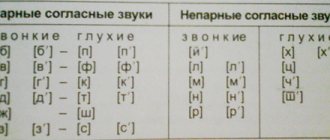Breathing phases
In life, breathing uses only 2 phases: inhalation and exhalation. Correct breathing when singing also involves holding the air and distributing it in such a way that it is enough not only for sound formation, but also for the last phase.
Breathing phases in vocals:
- inhale;
- holding your breath;
- exhalation.
To obtain high-quality sounds, you need to work out each phase. You can do this with a teacher during vocal lessons for adults.
How to take a breath correctly
You need to take a breath through your nose and mouth. Inhalation is made silently, quickly and deeply. The ribs straighten and the diaphragm contracts. There should be no tension in the muscles.
The staging of singing breathing begins precisely with practicing the inhalation phase. Correct execution requires compliance with the following rules:
- the inhalation is active, but imperceptible, for the hearing and sight of others;
- conscious control on the part of the vocalist over the process;
- air capture follows the half-yawn principle;
- Inhalation is carried out a little earlier than phonation begins.
Holding your breath
The air is not immediately released, as when singing, but is retained in the lungs. Before a sound attack, the breathing process almost completely stops. At this moment, the diaphragm is lowered, the lower parts of the ribs are spread apart, and the front of the abdomen is ready to contract.
This phase is the moment when the inhalation unit is fixed and allows the loss of breathing to be eliminated at the initial stage.
Very often, beginning vocalists cannot cope with this particular phase. The formation of singing breathing is carried out using special breath-holding exercises.
Exhalation
Singing sounds appear precisely at this phase. Before singing begins, the upper part of the vocal apparatus must go into the form of future phonation. The lower jaw drops slightly and the pharynx opens. The most important task of the vocalist at this moment is to turn the air into sound waves. This can only be done with full control of breathing.
Exhalation should be smooth, with high-quality pressure. There should be no decrease in the singing volume of the chest. If respiratory support is not enough, then you should do another momentary air retention and only then begin vocalization.
Vocal checklist for beginners
There are many ways to analyze your breathing. We have prepared a small checklist for beginners. Try singing right now, and then answer these questions for yourself:
- Do you have enough air to sustain a long note when singing?
- Can you sing an entire phrase in one breath?
- Does your voice sound at full strength and can its timbre be determined?
- What's wrong with your shoulders - are they in place and not jumping? : )
- Are you able to control the harshness of your voice? Does it sound “soft”?
- How does your throat feel - is it okay, does it hurt?
If you answered all or some of the questions with an unequivocal “no,” then most likely your problem is improper breathing. Before we begin to work through this problem, let's look at what types of breathing generally exist.
Types of breathing
So, breathing is conventionally divided into the following types:
Clavicular or upper breathing. If you notice that your shoulders “jump” when you sing, then this is what you are using. This is the most superficial type, in which only the upper parts of the lungs are actively involved;
Thoracic or intercostal
Pay attention to your chest: it should not fall or rise while singing, but should be level. With this type of breathing, the chest expands by raising the ribs, and our main breathing muscle - the diaphragm - remains inactive;
Abdominal or diaphragmatic
This is the most complete, deep type. This is exactly what we need: we must learn to correctly use the diaphragm and abdominal muscles when singing.
Support in vocals: detailed analysis
As Fyodor Ivanovich Chaliapin, a famous Russian opera singer, wrote in his memoirs, his teacher, tenor Dmitry Usatov, approached his students, beat them in the chest and exclaimed: “Pull up, damn you! Support! Singing support is one of the most mysterious concepts in vocals. Everyone describes it differently. As we have already said, support is a subjective sensation in the torso area that occurs with correct diaphragmatic breathing while singing. In simple words, it is a feeling of internal pressure. For example, you feel “support” at the moment when you cough (in an exaggerated form) or, say, snort at a cat.
Our vocal muscle, the diaphragm, is in a flexed position. When we take air into the lower part of the lungs, they immediately press on the diaphragm, and the diaphragm expands. Our main task when singing is to retain the air inside for as long as possible and carefully supply it to the vocal cords: in small portions and evenly. This is precisely the secret of uniform, soft voice formation: through indirect control of the diaphragm, we prevent a continuous high-speed exit of air, which prevents us from playing a note.
The most necessary feeling that will help you take air with your diaphragm and expand your ribs is fear. Try to be scared! You will immediately feel your ribs expanding. Record this feeling. When we gather in this position (as if we are “grouping”, creating an “air point” inside), we work with our internal pressure: this pressure, this “support” is what we need to maintain.
It is also important not to forget about what is called “reset of support”. Resetting the support is necessary so that before each new phrase, after you inhale, you have a stable, “your” standard set of air and “your” certain pressure, from which it is easiest for you to start
Therefore, exhale sharply after completing the phrase: this way you release the air remaining after the sung phrase. As you expel the air, you will feel a kind of “push” with your diaphragm forward. Now that we have figured out what support is, let's move on directly to the exercises.
Gymnastics Strelnikova
Vocal teacher at the MakSim School of Arts, Leah Matissen, told I am a Parent that the breathing exercises used in singing are most often based on yoga practices. The most common gymnastics is named after Alexandra Strelnikova. It was developed by her for singers who have lost their voice. This is therapeutic gymnastics that trains and massages the muscles responsible for sound production, including ligaments, straightens the lungs and increases their volume
The main focus is on inhalation. He trains - short, deep, light
Gymnastics exercises by Strelnikova
There are three simple exercises for beginners. It is best to do them together with your baby. This way he will learn to do it correctly. In addition, it will be much more fun for him to exercise with an adult.
"Palms"
Ask your child to stand up straight and show you his hands. Elbows should be down. Then tell your child to take a short, loud breath and clench his fists at the same time. Make sure that the child squeezes all fingers at the same time and very actively.
After inhaling, you need to unclench your fists and exhale freely through your nose or mouth. Repeat this several times.
After four noisy breaths, stop the child and let him rest for three to five seconds. For the best effect, you need to breathe in this way for 24 cycles of four inhalations and exhalations.
What to pay attention to:
- Do not spread your fingers when exhaling. The hands must be relaxed after squeezing;
- there is no need to control your exhalation. Only inhalation should be active;
- no need to pause while inhaling or exhaling;
- If your child feels dizzy while doing a task, stop it. The exercise can be continued while sitting.
"Epaulettes"
Ask your child to stand up straight and clench his hands into fists and then place them on his waist. Let the child take the same short and noisy breath through his nose as in the previous exercise, while simultaneously extending and pushing his fists towards the floor. This movement is similar to a push-up. And along with this movement you need to unclench your fists.
It is necessary to take eight breaths in a row with movements, without stopping. Then rest for three to five seconds and repeat eight breaths.
What to pay attention to:
- after unclenching his fists, ask the child to spread his fingers;
- as you inhale, your shoulders tense and your arms reach toward the floor;
- inhalation occurs easily and passively, the hands return to their place and clench into fists;
- Do not open your mouth wide when exhaling;
- don’t concentrate on exhaling;
- This exercise can be done sitting or lying down.
"Pump"
Ask your child to stand at attention. Let it lean down, but not too much. The back should be slightly rounded and the head should be lowered. Then ask him to take a short, noisy breath.
Now let him rise, but not completely straighten, and exhale freely.
It is necessary to do this eight bows and breaths, then take a pause for three to five seconds and repeat eight more times.
Tips for beginners
A man, a girl, a child, in general, anyone can sing, and it doesn’t matter whether he has vocal abilities or not, because beautiful singing is a skill that anyone can master. You can practice on your own or take vocal lessons from scratch with a teacher.
Whatever path you choose, we recommend that you listen to the following tips:
- Do not overstrain the ligaments, as they take a long time to recover;
- exercises must be done with short breaks;
- It’s worth mastering new exercises and techniques gradually;
- tongue twisters will help improve speech and clarity of pronunciation of words;
- You should start with 5 minutes of training a day, gradually increasing the time of training;
- You should avoid drinking alcoholic beverages and cold foods, as they have a negative impact on the vocal cords.
How to breathe correctly when singing
In singing, any particular type of breathing is never used in isolation; a mixed or combined version is more common. This means that the standard vocalist must be able to breathe as he needs here and now, have freedom of breathing in the same way as a dancer has freedom of movement
An important difference between singing breathing and speaking breathing is the length of exhalation: the vocalist needs a powerful air flow, and this imposes certain requirements on the quality of inhalation
The inhalation should be quick, capacious and silent. A noisy inhalation spoils the performance, a slow one wastes time, a weak one does not provide a sufficient volume of air. Inhalation is followed by a short breath hold. The exhalation should be strong, long, the throat should be as open as possible, the larynx should be lowered
It is important to be able to stretch your air reserves and not lose the strength of exhalation at the same time.











